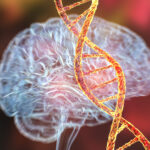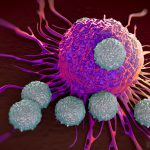When Bokai Zhu, Ph.D., assistant professor of medicine at Pitt, started collaborating with a mathematician to solve complex biological problems, he could never imagine that they would discover a “musica universalis” inside living cells.
The Greeks saw musica universalis – harmonic frequencies in nature – in the motion of the planets, whereas Zhu found it in the rhythms of gene expression across several different animal species.

In a paper published in PLoS Biology in January, Zhu’s lab described an evolutionarily conserved biological clock that is shared between mammals and simple marine animals and follows a 12-hour cycle of ocean tides.
Today, Zhu was awarded the National Institutes of Health (NIH) Director’s New Innovator Award, worth over $2 million to continue this work.
Cells that make up bodies of all living organisms are incredibly complex and follow biological clues encoded in the networks of genes that turn on and off, sometimes at a defined hour of the day. When Zhu analyzed gene networks within cells that make up a mouse liver, he found something profound and surprising: Many of those genes were following a 12-hour cycle, turning on at dusk and off at dawn.
The idea that genes follow time cues isn’t new. The 24-hour clock that follows the Earth’s rotation around its axis, called a circadian rhythm, is encoded in our cells as well. This clock dictates sleep and wake cycles, cues changes in body temperature and brain activity, and regulates production of hormones.
But Zhu’s discovery offers something novel – the 12-hour clock works independently of the circadian rhythm, instead following the cycle of tides washing on and off the ocean shores.
In fact, his team found that lab mice, who’ve never been to a beach, and marine animals — a sea anemone and an ocean snail — share many of the same 12-hour clock genes.
“These 12-hour oscillations did not appear out of the blue,” said Zhu, who is also a member of Pitt’s Aging Institute. “Mammals that don’t live in the ocean and don’t follow tidal cues have the same rhythms as the 12-hour oscillations robustly conserved in marine animals that adjust their rhythm to the tides.”
The 12-hour clock seems to have very important functions, from controlling the flow of information through genes encoded in DNA to regulating the composition and activity of molecular players inside the cells.
Zhu explains it with a traffic analogy. Inside our cells, there are two rush hours, at morning and night, when we transition between sleep and wakefulness, fasting and feasting. Metabolic demands on the system increase at these times, and, if cells can’t keep up, that could lead to stress damage and accelerated aging.

The 12-hour clock might address these molecular rush hours by opening up an HOV lane, so that more gene transcription, translation into proteins and intracellular transport can happen all at the same time.
“There is a tide in each one of us, and even though we don’t live in the ocean anymore, it appears that this ancient clock is conserved in us but has been adapted to serve a new role that remains to be discovered,” said Zhu.
That’s precisely what Zhu plans to do with his new grant. Broadly, that process involves creating a better tool for measuring 12-hour rhythms in complex biological systems, characterizing the molecular machinery that controls these rhythms and, ultimately, uncovering the functional benefit of 12-hour rhythms for the whole organism.









